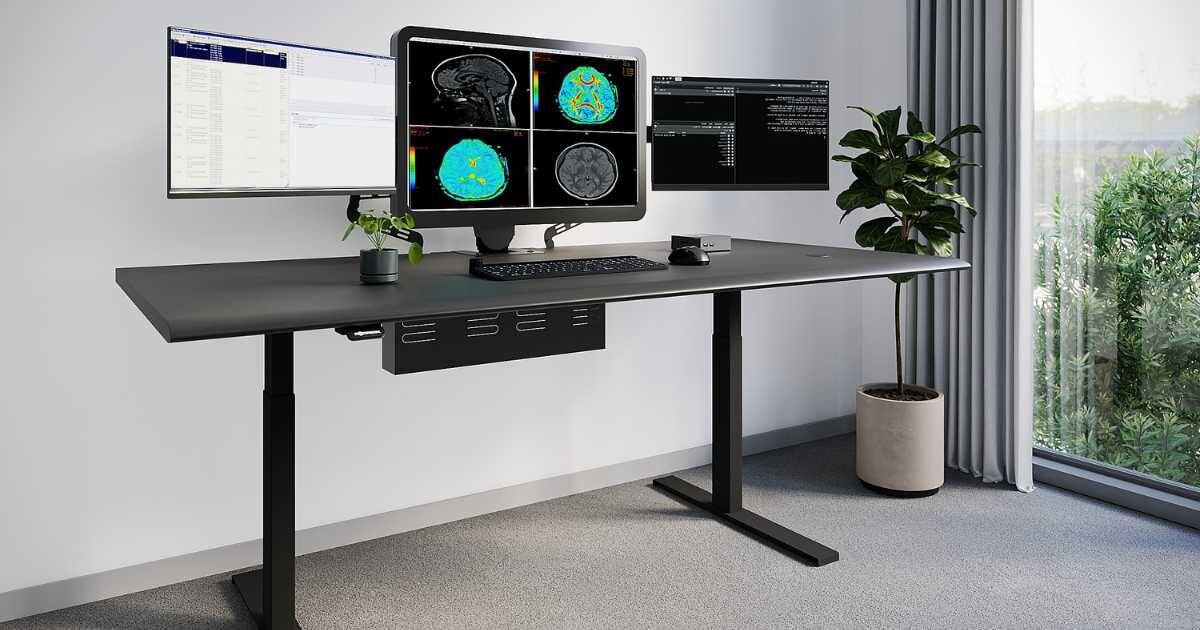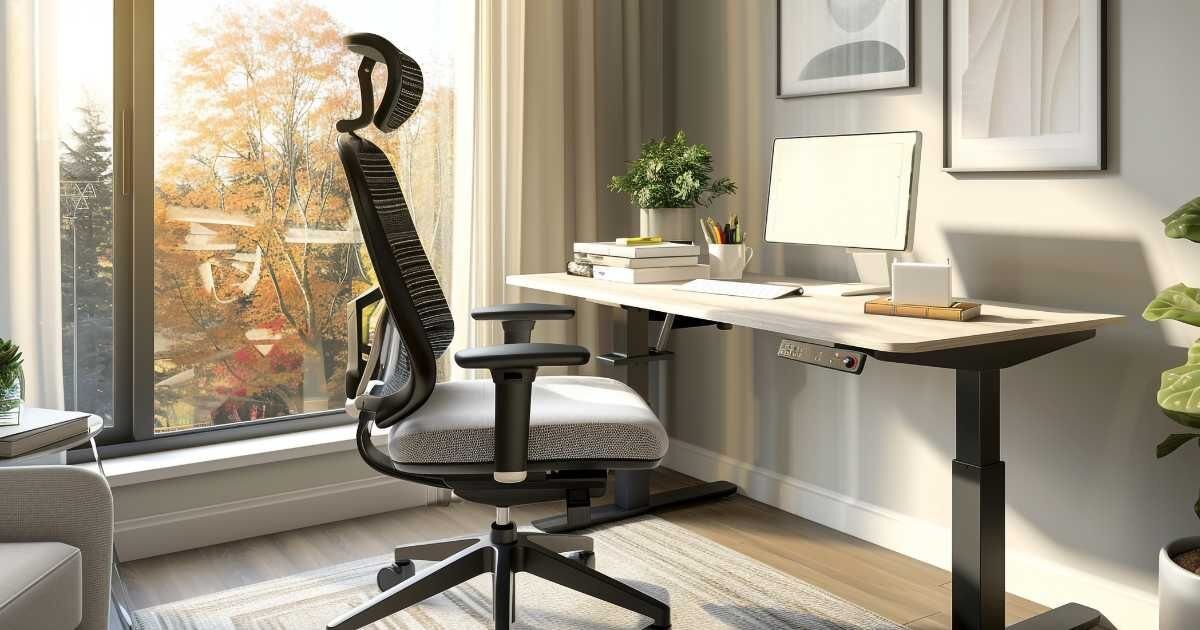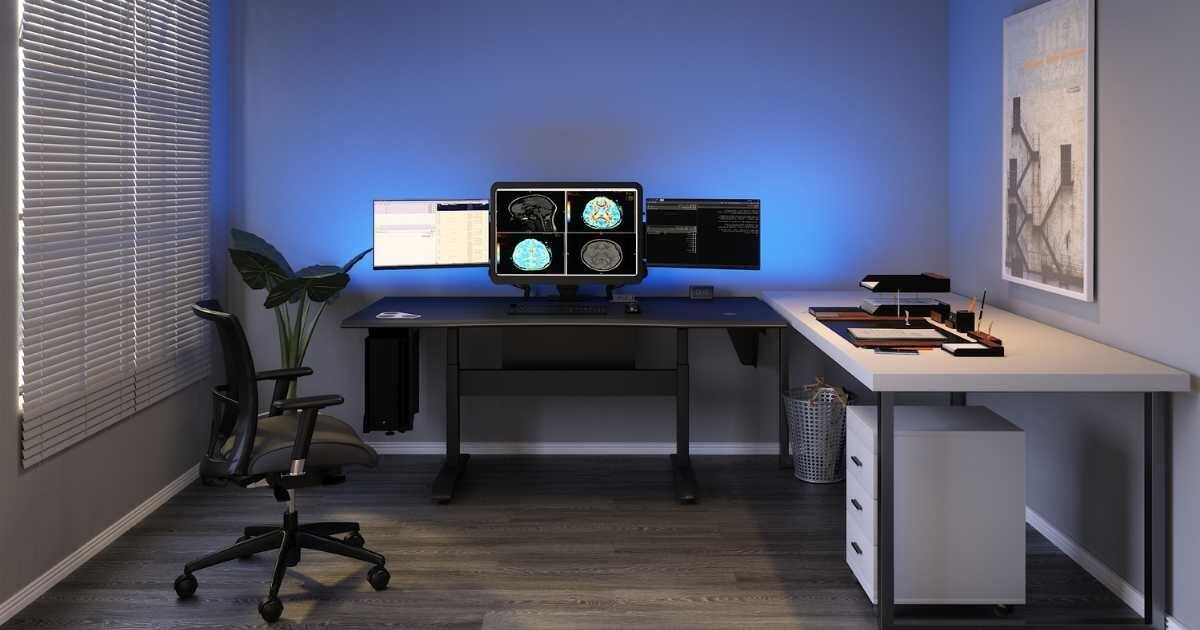
We collect basic website visitor information on this website and store it in cookies. We also utilize Google Analytics to track page view information to assist us in improving our website.

The shift to remote work has transformed many professions, including radiology. With advancements in teleradiology and Picture Archiving and Communication Systems (PACS), radiologists can now review medical images from the comfort of their homes. This transition, accelerated by the COVID-19 pandemic, has allowed radiologists to work remotely while maintaining productivity.
However, long hours spent analyzing images on multiple screens at home present new challenges, especially regarding physical health.
Proper ergonomics setups are essential to prevent repetitive strain injuries (RSIs) and assure that all radiologists can work comfortably and efficiently. RedRick Technologies offers personalized ergonomics designs so radiologists can optimize their home workspace healthily and productively.
Teleradiology, the practice of delivering radiology services remotely (without being physically present at a healthcare facility), is an increasingly prevalent and innovative approach in modern healthcare.
Although radiologists have been working from home since the 1990s, more radiology departments rapidly adopted home workstations to comply with safety and social distancing measures, primarily due to being in the healthcare sector during the COVID-19 pandemic. A survey of 174 radiologists revealed that 73.6% of sites installed home workstations, and 55.9% of respondents plan to continue remote work even post-pandemic due to its benefits.
Decreased Stress: Working from home often leads to a more relaxed environment, reducing the mental and physical stress associated with long commutes and hectic hospital settings.
Improved Work-Life Balance: Remote work allows radiologists to balance their professional duties with personal responsibilities, improving overall well-being.
Consistent Productivity: Many radiologists report that their productivity remains high while working remotely. Some even note faster turnaround times for diagnostic reports.
While teleradiology has benefits, many radiologists were unprepared to recreate the ergonomic setups they previously had in hospital reading rooms. The result was a host of physical discomforts, including:
Musculoskeletal Disorders (MSDs): Prolonged hours of sitting in makeshift home offices, such as dining room tables or chair recliners, can lead to MSDs affecting the muscles, nerves, and tendons.
Eye Strain: Inadequate lighting and improper monitor placement can increase the risk of Computer Vision Syndrome (CVS), which can cause headaches, dry eyes, and visual fatigue.
Addressing these ergonomic challenges is essential for radiologists working from home. RedRick Technologies is leading the way in providing solutions tailored to radiologists' needs in their specific home environments.
Without the specialized setups typically found in hospital reading rooms, home offices are often less equipped to support the long hours radiologists spend in sedentary positions, leading to physical discomfort and health issues.
Radiologists are especially vulnerable to repetitive strain injuries (RSIs) and musculoskeletal disorders (MSDs) due to the prolonged periods spent working on diagnostic images, using a keyboard and mouse, and viewing multiple monitors. These injuries are among the most commonly reported workplace strains. In a non-optimized home office setting, common causes include:
Poor Seating: Without ergonomic chairs, radiologists may experience back, neck, and shoulder strain from poor posture.
Improper Monitor Placement: Monitors positioned too high or low can lead to neck pain, while improper focal distance can contribute to eye strain.
Static Positions: Sitting for extended hours without frequent changes in position can contribute to fatigue and discomfort, particularly in the lower back and legs.
A study by Dr. Talia Vertinsky found that 65.4% of radiologists experience Computer Vision Syndrome (CVS) symptoms. This condition, caused by prolonged screen exposure, leads to a variety of eye-related issues such as:
Headaches
Dry Eyes
Blurred Vision
Neck and Shoulder Pain
Inadequate Lighting: Poor ambient lighting and excessive screen glare can cause visual fatigue.
Improper Screen Setup: Monitors that are too bright, too far away, or poorly positioned can exacerbate eye strain and fatigue.
Remote radiologists must address these ergonomic challenges to avoid long-term health issues. RedRick Technologies offers customized solutions to create home workspaces that reduce strain, improve comfort, and enhance productivity, allowing radiologists to work efficiently without compromising their well-being.
Creating an ergonomic workstation is essential for radiologists working from home to maintain long-term comfort, health, and efficiency. A few key components are critical in optimizing a home office for radiologists, who spend extended hours at their desks reviewing medical images.
Height-adjustable desks, also known as sit-stand desks, allow radiologists to alternate between sitting and standing throughout the day. This simple adjustment helps alleviate the physical strain associated with prolonged sitting and reduces the risk of repetitive strain injuries (RSIs).
Benefits: Research by the American Medical Informatics Association found that using sit-stand desks increased radiologists' productivity by 12% and reduced musculoskeletal pain by 10%.
Improved Circulation: Rotating in intervals between 15-30 minutes of sitting and standing can promote better circulation and prevent stiffness and fatigue in the lower back and legs.
Improper monitor placement can result in significant cervical issues, and eye strain or discomfort, especially for radiologists who often work with multiple screens.
Eye-Level Positioning: Monitors should be placed at eye level, about 50-75 cm from the user’s eyes, to maintain a neutral neck position and reduce eye-strain.
Minimize Glare: Monitors should be positioned to avoid direct light and screen glare, which can lead to eye strain and impact diagnostic accuracy.
Regular computer chairs do not provide the support a well-designed ergonomic chair can. Ergonomic chairs are designed to support proper posture and prevent back pain.
Lumbar Support: Chairs with adjustable lumbar support help maintain the spine's natural curve, reducing strain on the lower back.
Customizable Fit: Adjustable features like seat heights, armrests, and tilt encourage a neutral and comfortable sitting position for radiologists.

Regular overhead lighting in a home can often be too bright and distracting, leading to increased eye strain and distraction. Proper light can enhance visual clarity while working.
Ambient and Task Lighting: Incorporating dimmable ambient lighting and focused task lighting minimizes glare and reduces the risk of eye strain, creating a more comfortable viewing environment.
Incorporating these key ergonomic elements helps radiologists create a home office that promotes both health and productivity. RedRick Technologies provides ergonomic solutions such as sit-stand desks, monitor mounts, and specialized lighting, all personalized to the needs of remote radiologists.

Beyond creating ergonomic solutions for radiologists in medical settings, we have branched out and created ErgoHome Workstations. Our specialization in ergonomic designs has led us to develop a range of products and solutions that improve the comfort and efficiency in home offices:
ComfortView Monitor Mount: Provides 12 inches of motorized height adjustment, allowing radiologists to reposition their monitors easily. It also includes effortless focal depth adjustment, supporting large, high-resolution monitors over 30 inches and ensuring accessible dual-display configurations.
ErgoHome-LITE series: It offers several vital ergonomic features designed for radiologists. The height-adjustable work surface includes motorized adjustment from 24” to 49.5”, operated with a touch control, and can lift up to 350 lbs. It also features a high-pressure laminate top with an ergonomically contoured front edge for added comfort, with 36” D x 72” W standard dimensions.
Ambient Lighting: The workstation includes dimmable ambient backlighting, adjustable between 465nm blue and 5k white, to reduce eye strain and visual fatigue during long reading sessions. This combination of features helps radiologists work comfortably and efficiently throughout the day.
RedRick’s ErgoHome-LITE solutions give radiologists the tools to create a home workspace that adapts to their needs, providing both comfort and functionality for long hours of remote work.
In combination with ergonomic workstations, radiologists can maintain ergonomic health while working from home by incorporating these practical exercises and making minor adjustments. These tips can significantly improve comfort and productivity throughout the workday:
Take Regular Breaks: Schedule short breaks every 30-60 minutes to stretch, stand, or walk. This helps prevent stiffness and reduces the risk of repetitive strain injuries.
Stretching: Incorporate stretches that target the wrists, shoulders, neck, and back to improve flexibility and reduce muscle tension.
Posture: Maintain proper posture by keeping your back straight, feet flat on the floor, and elbows close to your body.
To reduce eye strain and fatigue:
Lighting Placement: Use dimmable lighting, ideally located behind the monitor set and illuminating the wall behind the monitors, to prevent glare and enhance comfort.
Lighting Brightness: Set the ambient light level to a comfortable level that complements the monitor’s level of brightness.
Monitor Position: To minimize neck strain, place your monitor at eye level and at least 50-75 cm from your eyes.
Home office ergonomics are essential for remote radiologists' ability to maintain overall comfort, productivity, and long-term health. Our ergonomic workstations are specially designed to enhance daily performance and reduce the risk of injuries such as musculoskeletal disorders and eye strain. Discover how RedRick Technologies' ergonomic solutions can help you create a healthier, more efficient remote workspace.
Contact us today to learn more about transforming your home office with personalized ergonomic solutions.